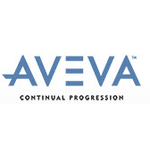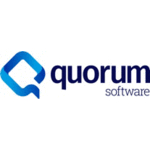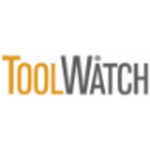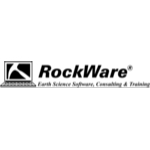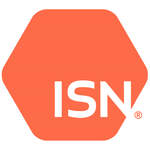TechnologyCounter provides genuine, unbiased real user reviews to help buyers make informed decisions. We may earn a referral fee when you purchase through our links, at no extra cost to you.
List of 15 Best Oil And Gas Software
Showing 1 - 15 of 66 productsAVEVA is a leading technology company that specializes in software solutions for the design, engineering, and operation of industrial facilities and infrastructure. With a commitment to innovation and customer satisfaction, AVEVA has been a trusted p...Read AVEVA Reviews
myQuorum is a solution for streamlining your business operations. With a user-friendly interface and robust features, myQuorum helps businesses of all sizes to efficiently manage their daily tasks and increase productivity. Say goodbye to complex sof...Read myQuorum Reviews
FieldCap, the top software solution designed specifically for streamlining and managing field operations. With its advanced features and user-friendly interface, FieldCap empowers businesses to efficiently track and report on tasks, saving time and i...Read FieldCap Reviews
ToolWatch is a solution for managing your construction tools and equipment. Say goodbye to lost or damaged equipment, wasted time and money. With ToolWatch, you can easily track, organize, and maintain your inventory for maximum efficiency and produc...Read ToolWatch Reviews
Aucerna Solutions is a leading provider of innovative software solutions for the oil and gas industry. With a proven track record of success, Aucernas solutions help companies optimize their workflows, increase efficiency, and make data-driven decisi...Read Aucerna Solutions Reviews
RockWorks is a dynamic software that revolutionizes the way geoscience and engineering professionals manage and analyze their data. With its user-friendly interface tools, RockWorks offers a seamless experience in modeling, visualization, and reporti...Read RockWorks Reviews
VAIL-PLANT is a software designed to streamline and enhance all aspects of plant management. With its powerful features and user-friendly interface, VAIL-PLANT is a solution for businesses seeking to optimize their plant operations. From inventory tr...Read VAIL-PLANT Reviews
Robo-commodity, a revolutionary software designed to simplify and enhance commodity trading. With its advanced algorithms and user-friendly features, Robo-commodity streamlines the trading process, making it more efficient and profitable for users. S...Read Robo-commodity Reviews
MODS Connect Suite is a software designed to streamline and enhance your business operations. This innovative suite offers a comprehensive solution for all your connectivity needs. With its advanced features and user-friendly interface, MODS Connect...Read MODS Connect Suite Reviews
ETAP is a software used in the field of electrical engineering. It offers a wide range of tools and features to analyze, design, and simulate power systems. Trusted by professionals and utilized in over 100 countries, ETAP has established itself as a...Read ETAP Reviews
Scada-Lite Well Manager, a powerful software designed to optimize and streamline well management processes. With innovative features and user-friendly interface, Scada-Lite simplifies monitoring and control of well systems, making it the perfect solu...Read Scada-Lite Well Manager Reviews
Scada-Lite FDCA, a powerful is a software designed to revolutionize the way industries manage and control their systems. With its advanced features interface, Scada-Lite FDCA is the perfect solution for streamlining processes and enhancing productivi...Read Scada-Lite FDCA Reviews
DocVue is a document management solution designed to streamline processes and improve efficiency. With its user-friendly interface and robust features, DocVue simplifies document handling, allowing businesses to focus on growth and productivity. Say...Read DocVue Reviews
ISNetworld is an innovative software platform that allows companies to easily manage their contractor and supplier information, ensuring compliance and enhancing safety across all industries. With its user-friendly interface and robust features, ISNe...Read ISNetworld Reviews
KloudGin is a software solution that streamlines your business processes and maximizes efficiency. With features designed to optimize every aspect of your operations, KloudGin empowers your team to work smarter and faster. Say goodbye to clunky syste...Read KloudGin Reviews
- What Is Oil and Gas Software?
- Top Reasons Why Businesses Need Oil and Gas Software?
- What are the top Key Features of Oil And Gas software?
- What Are the Top Benefits of Oil and Gas Software?
- What Are the Steps to Choose the Right Oil and Gas Software?
- What Are the Types of Oil and Gas Software for Different Industries?
- What Are the Technology Trends for Best Oil and Gas Software?
- What Are the Deployment Options for Oil and Gas Software?
What Is Oil and Gas Software?
Oil and gas software refers to a specialized category of software that is purposefully developed to effectively monitor and manage the various operations and processes within the oil and gas sector.
The utilization of oil and gas management software facilitates the monitoring and administration of several aspects of a company's activities, encompassing production, exploration, drilling, financial management, and operational data.
Additionally, this technology can assist organizations in the identification of prospective reservoir locations, the design of optimal well paths, the formulation of development strategies, and the enhancement of production efficiency.
The software functions by amalgamating data from several domains to furnish comprehensive information within a unified platform. The utilization of cloud-based platforms enables enterprises to centralize their data storage, facilitating convenient access to data regardless of geographical location or time constraints.
Top oil and gas software is equipped with analysis and data visualization tools, enabling users to gain a comprehensive understanding of their data and make well-informed decisions. This program is additionally employed for the purpose of analyzing the expenses associated with the extraction and distribution of fuel, with the aim of ensuring comprehensive and accurate cost allocation.
In the oil and gas business, the utilization of oil & gas software is deemed important for companies, as it facilitates the proficient and effective monitoring and administration of their various activities and operations.
Top Reasons Why Businesses Need Oil and Gas Software?
1. Automation of operations: Top oil and gas software possesses the capability to facilitate the automation and optimization of production and accounting activities within enterprises.
2. Enhanced analytics: The utilization of oil and gas management software in company operations facilitates the acquisition of valuable insights pertaining to data and trends, hence enhancing the quality of decision-making through a more informed approach.
3. Improved visibility: Software applications have the potential to provide firms with timely access to operational data, facilitating prompt implementation of corrective measures.
4. Improved safety: Software plays a crucial role in mitigating risk by offering timely alerts and providing recommendations for safety management efforts.
5. Cost reduction: The utilization of software has the potential to mitigate overhead expenses and operational costs.
6. Improved compliance: Top oil and gas software has the potential to mitigate both the risks associated with regulatory conformance and the associated expenses.
7. Scalability: Software has the potential to facilitate the growth of enterprises in a seamless manner, adapting to their specific requirements as necessary.
8. Reduced inventory: The oil and gas system has the capability to optimize inventory, resulting in a reduction of expenses.
9. Automated contracting: Software has the capability to automate the processes of contracts and invoicing.
10. Efficient resource management: Oil and gas tools possess the capacity to augment company operations through their ability to facilitate the efficient tracking, management, and deployment of resources.
11. Data Security: The oil and gas system has the potential to enhance data security and privacy, thereby serving as a safeguard against cyber-attacks that pose a threat to enterprises.
12. Accurate forecasting: Software applications have the potential to enhance the precision of demand and supply forecasts for enterprises.
13. Improved customer service: Oil and gas management software applications have the potential to enhance the management of client contacts and feedback within enterprises.
14. Streamlined services: Oil and gas tools have the capability to facilitate automated management of customer orders, invoicing, and billing processes for enterprises.
15. Improved workflow: Software has the potential to enhance operational efficiency and optimize workflow within enterprises.
What are the top Key Features of Oil And Gas software?
• Asset Management: Top oil and gas software facilitates the management and monitoring of various assets associated with oil and gas activities, encompassing drilling rigs, wells, pipelines, and refineries.
• Cost Tracking: This tool facilitates the monitoring and administration of expenses associated with oil and gas activities, encompassing production costs, labor expenditures, and material costs.
• Risk Management: Enables users to discern and address hazards associated with oil and gas activities, encompassing environmental, health, safety, and financial issues.
• Modern Geological Analysis: The Oil and gas tools offers users the ability to access a wide range of data and tools that facilitate the creation of digital maps, as well as the analysis of seismic data and other geological information.
• Automated Production Reporting: The individual is responsible for generating and distributing automated production reports, as well as offering analytical assessments and valuable insights based on the production data.
• Real-Time Monitoring: The monitoring of petroleum and gas resources and activities in real-time enables enhanced decision-making capabilities and facilitates prompt incident response.
• Inventory Management: The oil and gas system effectively manages and tracks inventories associated with oil and gas operations, enabling users to easily monitor stock levels and promptly place orders.
• Regulatory Compliance: Top oil and gas software provides users with timely information regarding regulations and standards pertaining to oil and gas activities, and assures adherence to all relevant legal requirements.
• Data Analytics: Utilizes analytics and data-driven insights to enhance the efficacy, profitability, and safety of oil and gas operations.
• Cloud-Based Solutions: This technology facilitates user access to cloud-based applications, enabling them to conveniently utilize the software from any location with an internet connection.
What Are the Top Benefits of Oil and Gas Software?
1. Increased Efficiency: Oil and gas software has the potential to enhance operational efficiency by facilitating the streamlining and automation of many operations, hence reducing reliance on manual data entry. The implementation of this approach has the potential to enhance both the precision and efficiency of many activities.
2. Cost Savings: Oil & gas software has the potential to decrease total costs by optimizing operations and eliminating the need for manual labor.
3. Accurate Data: Oil and gas software possesses the capability to enhance data accuracy through the provision of real-time updates and automated data collecting.
4. Improved Safety: The utilization of oil & gas software has the potential to enhance safety measures within the industry by facilitating the automatic detection and notification of hazardous circumstances. Additionally, such software can offer streamlined mechanisms for personnel to promptly report any safety-related concerns.
5. Centralized Management: Oil and gas management software offers managers a centralized perspective of operations and the capability to oversee all aspects from a unified platform.
6. Increased Productivity: Oil & gas software has the potential to enhance staff productivity by minimizing the amount of time dedicated to manual data entry and offering user-friendly data analysis capabilities.
What Are the Steps to Choose the Right Oil and Gas Software?
1. Define you needs: Prior to commencing the selection process for an oil and gas software, it is imperative to thoroughly assess and document all operational requirements and potential functions. By using this approach, you can secure the selection of Oil and gas tools package that aligns with the specific needs and demands of your organization.
2. Research the market: After the identification and documentation of business needs, it becomes crucial to do market research in order to ascertain the most optimal software solution for the corporation.
Examine the characteristics and functionalities of web-based and desktop-based programs, and conduct a comparative analysis of their respective attributes and capabilities.
3. Talk to vendors: After conducting preliminary research, it is advisable to initiate contact with oil & gas tools providers in order to engage in comprehensive discussions regarding their respective solutions.
Gaining a comprehensive understanding of the precise manner in which their software can contribute to the advancement of one's firm and assessing its compatibility with the organization are crucial considerations.
4. Evaluate features, pricing, and support: Upon engaging in discussions with several vendors, it is imperative to conduct a comprehensive evaluation of the features, pricing, and customer services that they provide. Conduct a comparative analysis of the costs and advantages associated with each option in order to ascertain the optimal choice for your firm.
5. Choose the software: After conducting thorough research and evaluations, it is advisable to select the program that most effectively fulfills your requirements. It is advisable to exercise confidence in the decision-making process prior to making a commitment, as doing so will ultimately result in time and cost savings in the future.
What Are the Types of Oil and Gas Software for Different Industries?
There exists a wide range of oil and gas software, which has been specifically tailored to meet the unique requirements of various businesses.
The types of oil & gas software may vary depending on the specific sector in question:
1. Exploration and Production (E&P) Software: E&P software helps to discover and extract oil and gas resources. It comprises tools for geological interpretation, reservoir simulation, and drilling optimization, allowing geoscientists and engineers to build precise 3D modeling and plan efficient operations.
2. Reservoir Management Software: This type of oil and gas tools improves oil and gas extraction by modeling fluid movement inside reservoirs, projecting production, and simulating better recovery strategies, allowing engineers to make data-driven decisions that maximize resource recovery and reservoir life.
3. Asset Integrity Management (AIM) Software: AIM oil & gas tools protect the safety and reliability of infrastructure such as pipelines and rigs. It provides risk management, inspection management, and corrosion monitoring through predictive analytics to prevent failures and assure regulatory compliance.
4. Health, Safety, and the Environment (HSE) Software: HSE oil and gas tools controls hazards in oil and gas operations by addressing incident management, safety audits, and environmental monitoring. EHS enables businesses to comply with legislation, improve workplace safety, and reduce environmental impacts.
What Are the Technology Trends for Best Oil and Gas Software?
1. Automation: The automation of manual activities in the oil and gas system, encompassing extraction, production, and distribution, is emerging as a significant technological trend of growing importance.
The utilization of software in the oil and gas industry facilitates the implementation of automated workflows, streamlining normal procedures, resulting in decreased operating expenses and mitigated environmental consequences.
2. Analytics: The utilization of advanced analytics in the oil and gas sector is experiencing a surge in popularity, particularly in the domains of data-driven decision-making and predictive maintenance.
There is ongoing development of software solutions that include advanced analytics to offer comprehensive analysis and valuable insights pertaining to oilfield operations.
3. Internet of Things (IoT): There is a growing trend among oil and gas industries to employ Internet of Things (IoT) software in order to enhance inventory management and pipeline monitoring capabilities.
Sensors are strategically installed for the purpose of monitoring and transmitting real-time readings to various devices, so enabling prompt decision-making processes that are informed by the data acquired.
4. Cloud Computing: There is a growing trend among oil & gas tools to employ Internet of Things (IoT) technology in order to enhance inventory management and pipeline monitoring capabilities.
Sensors are strategically installed to facilitate continuous monitoring and expeditiously transmit real-time readings to various devices, so enabling prompt decision-making processes that are informed by the acquired data.
5. Cybersecurity: The increasing use of digital operations by firms has led to a heightened emphasis on the need of cyber security. There is ongoing development of both on-premise and cloud-based systems aimed at ensuring comprehensive data security, with the objective of safeguarding against advanced cyber-attacks.
What Are the Deployment Options for Oil and Gas Software?
The selection of deployment options for Oil and Gas software is contingent upon the specific type of software being employed.
Typically, Oil & Gas tools are implemented through one of four distinct deployment methods.
1. On-premise: In the context of an Oil and Gas company, an on-premise solution refers to the practice of physically hosting and managing software within the company's data center located on its premises.
This approach offers the ability to manage and tailor the system according to specific requirements, but it also introduces the possibility of higher expenses for hardware and ongoing infrastructure upkeep.
2. Cloud-based: Cloud-based solutions for delivering Oil and Gas applications have gained significant popularity due to its safe and centralized hosting and management environment. The provision of scalability and the option for corporations to remunerate for the services they utilize are facilitated by this arrangement.
3. Hybrid cloud: This solution combines elements of on-premise and cloud-based systems, providing customers with the flexibility to decide whether specific components of their oil & gas tools should be hosted in their local data center or in the cloud.
4. Mobile: The utilization of mobile deployment alternatives presents an opportunity to mitigate expenses related to hardware and enhance the convenience of software accessibility.
This can prove to be particularly advantageous for individuals working in the field, as they are commonly situated away from a stationary workspace and encounter fluctuating internet connectivity speeds.
